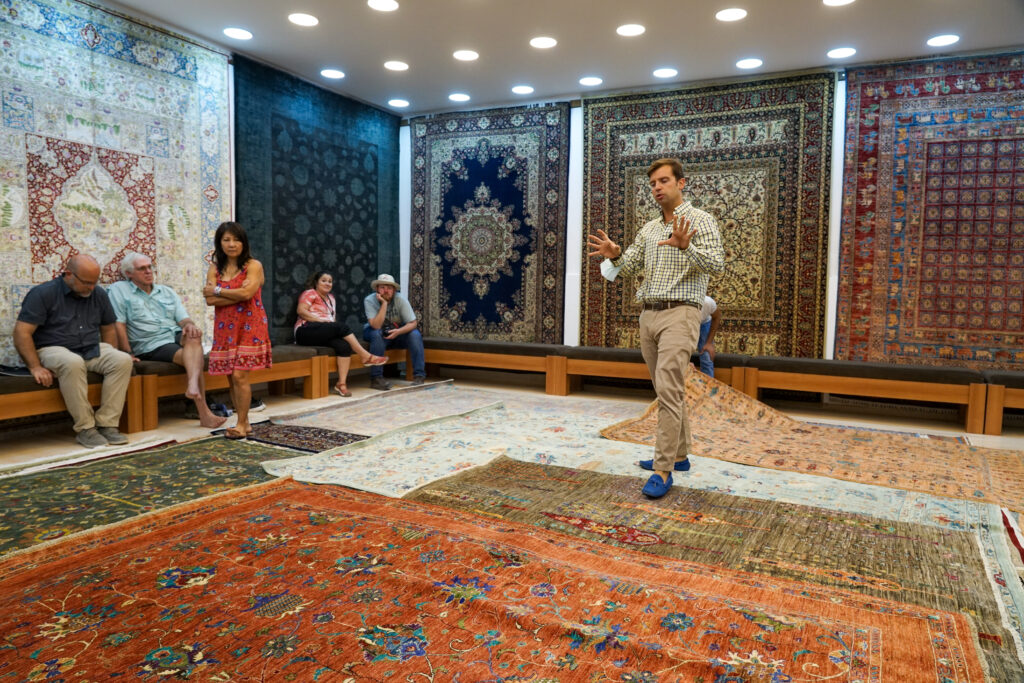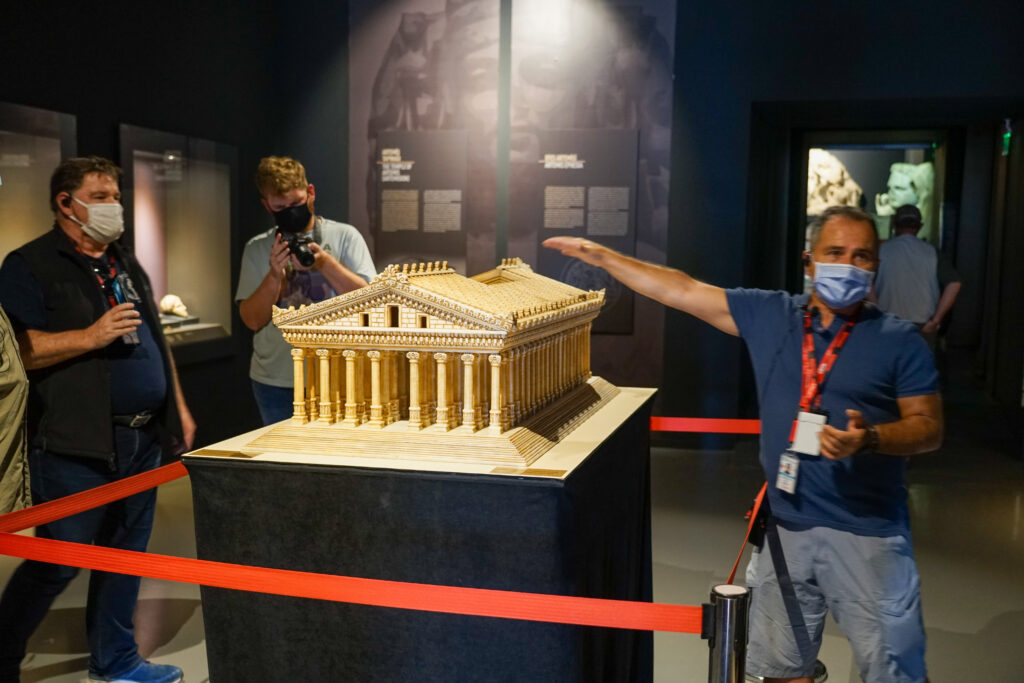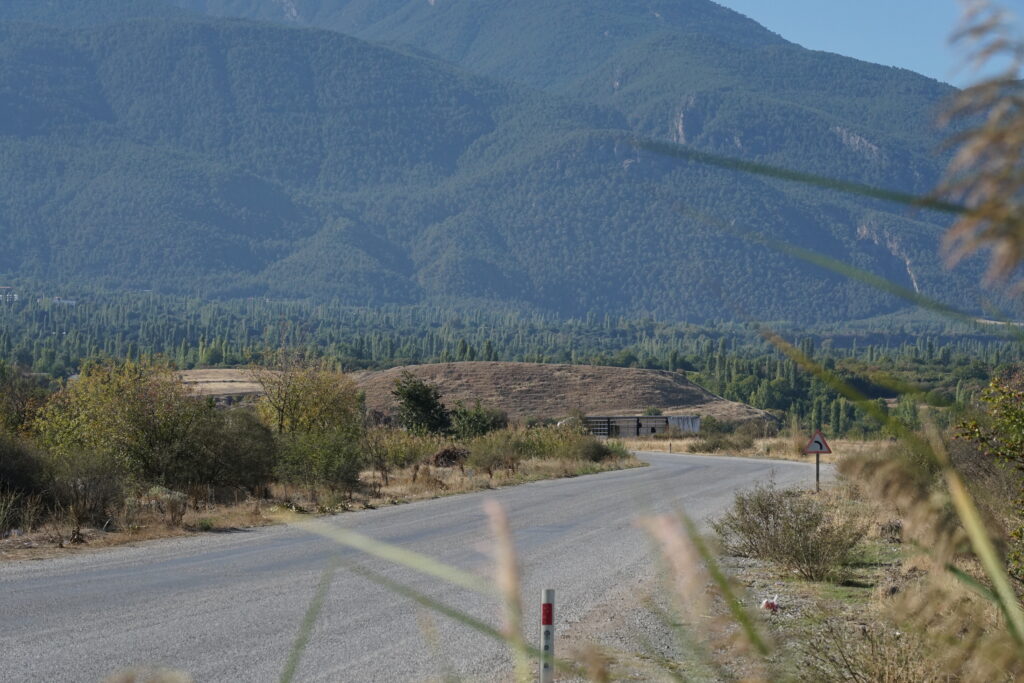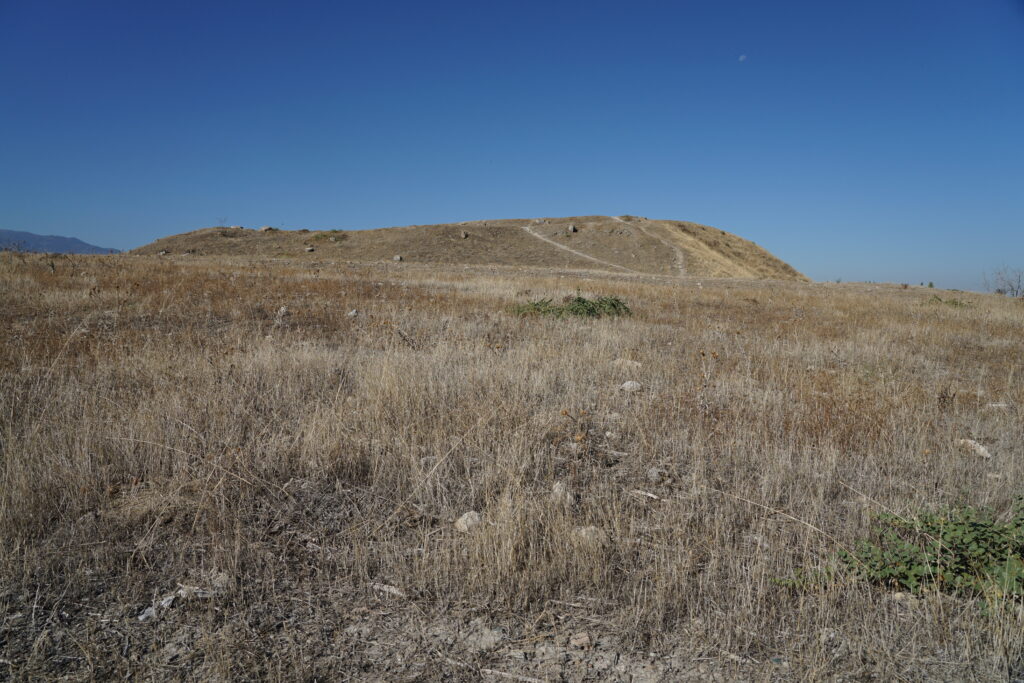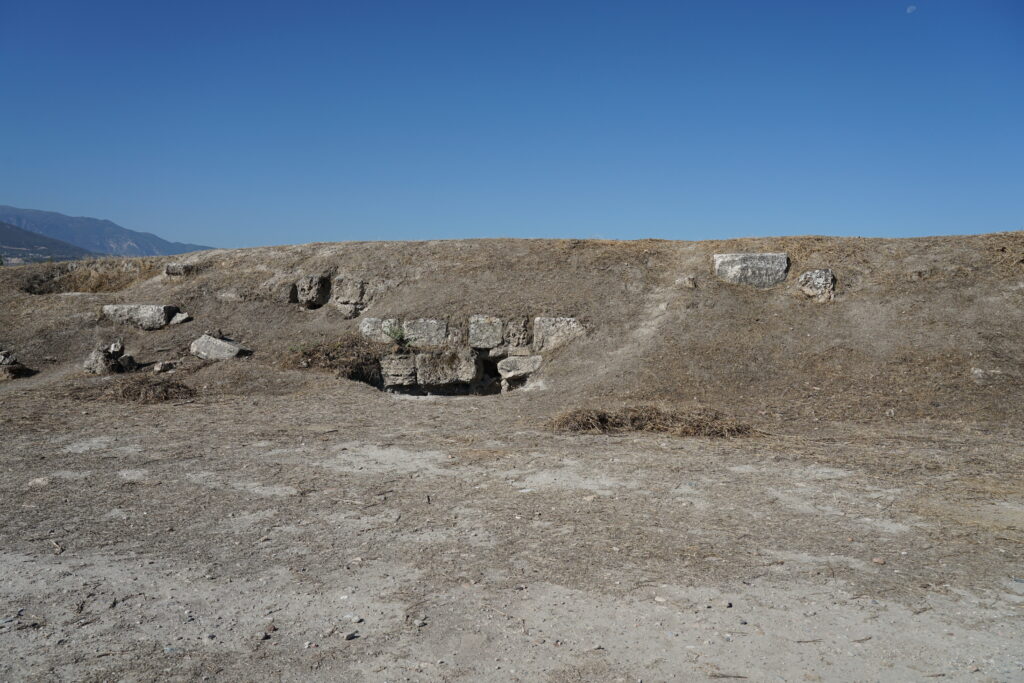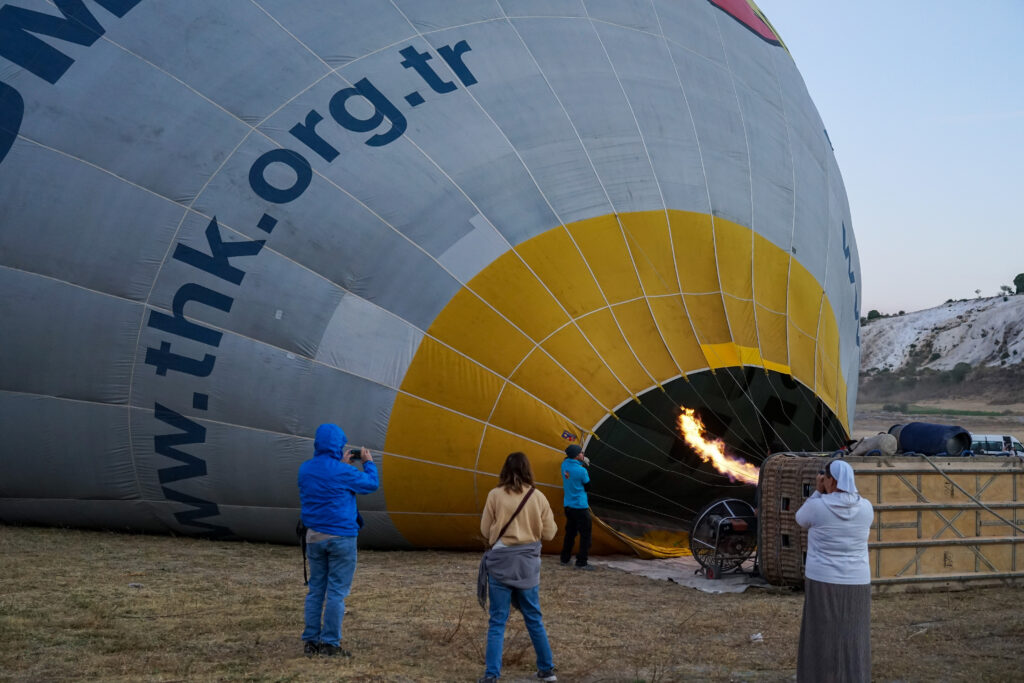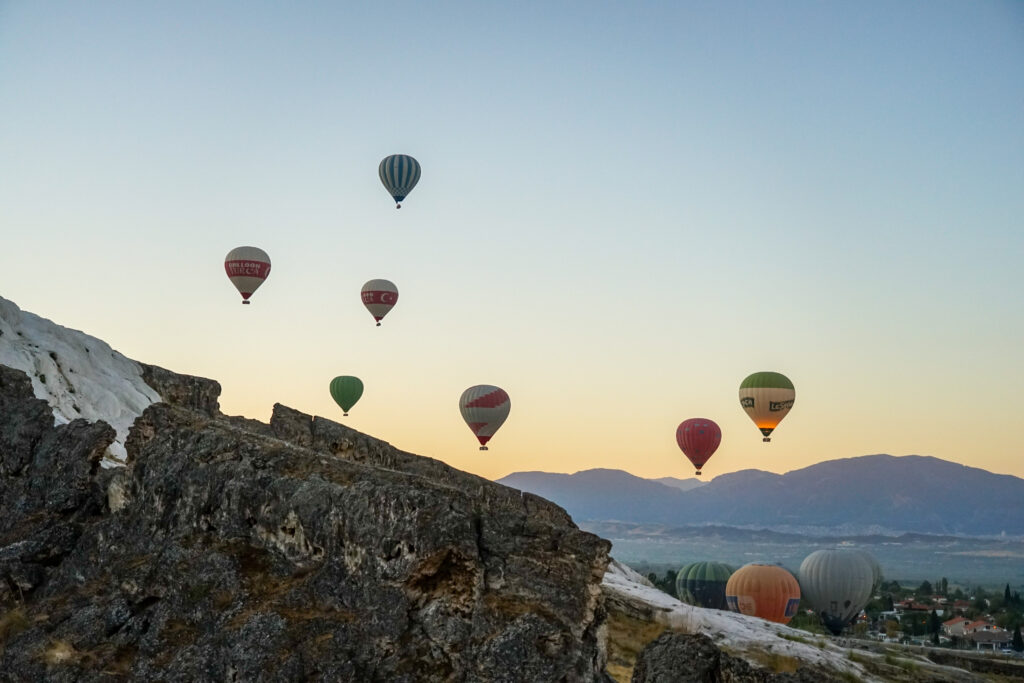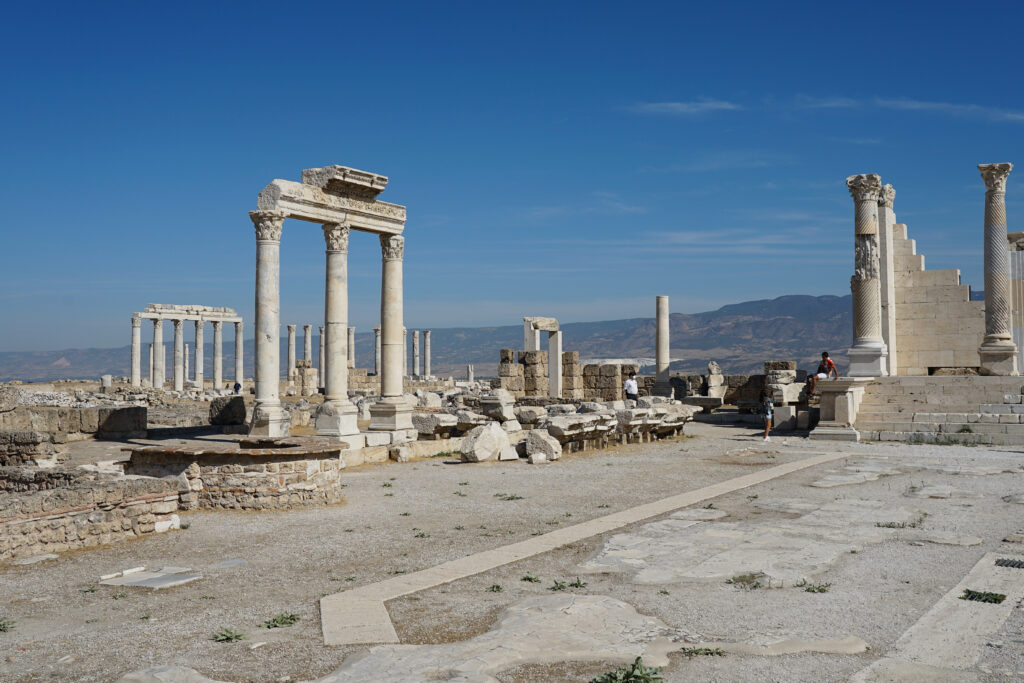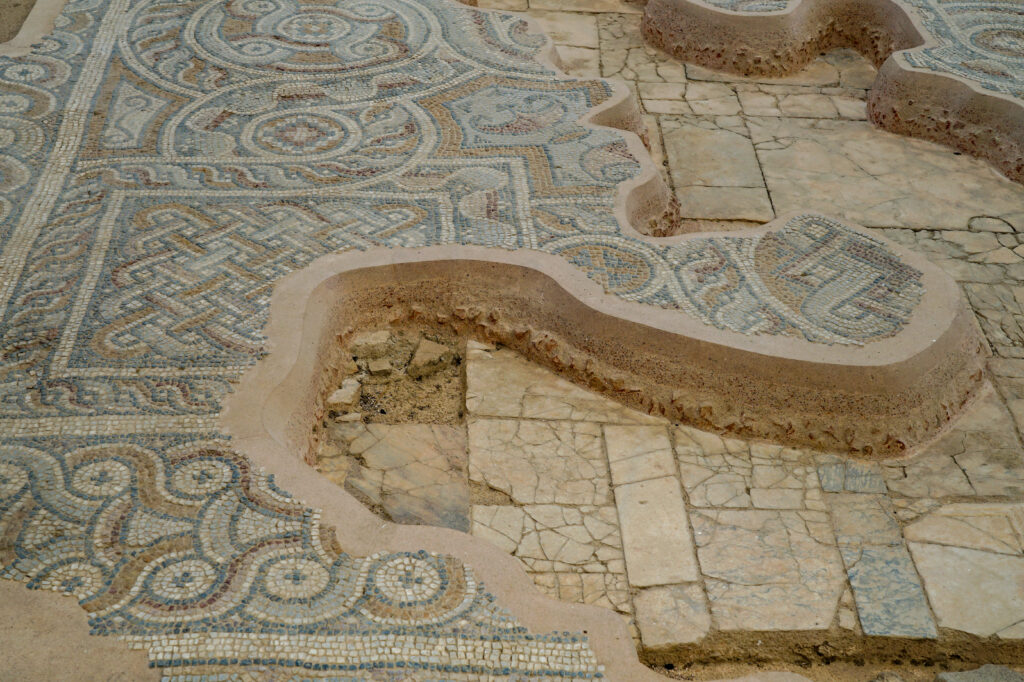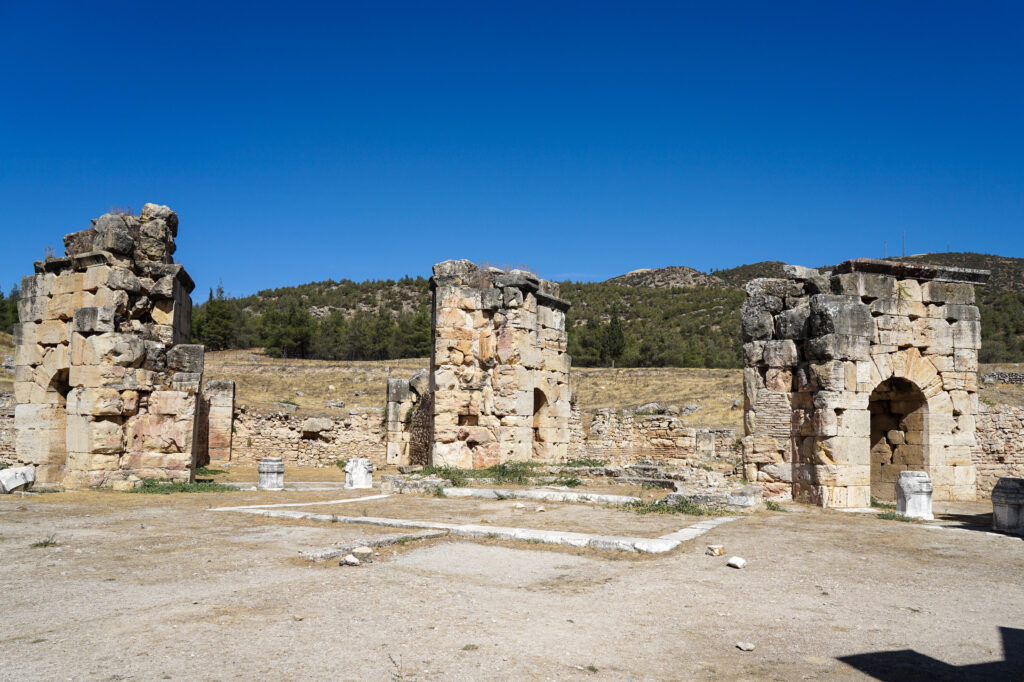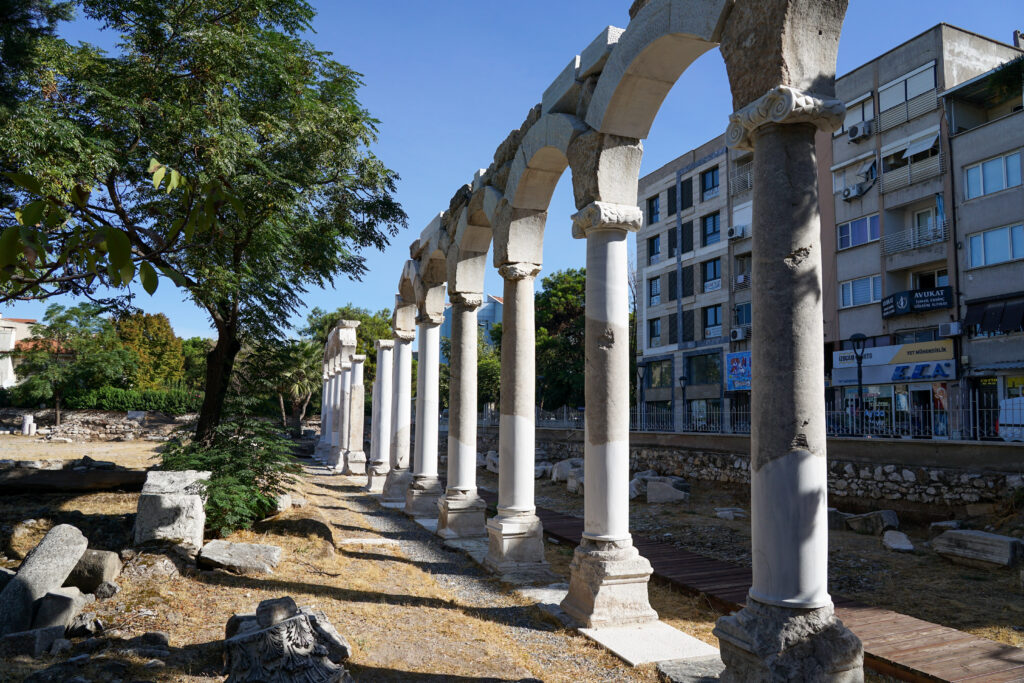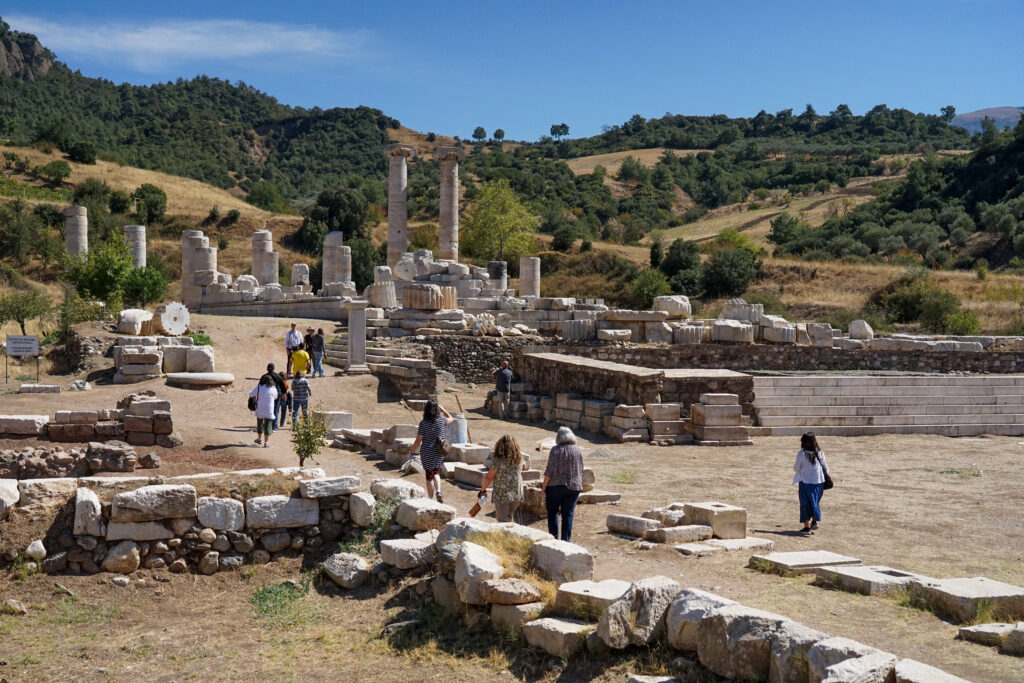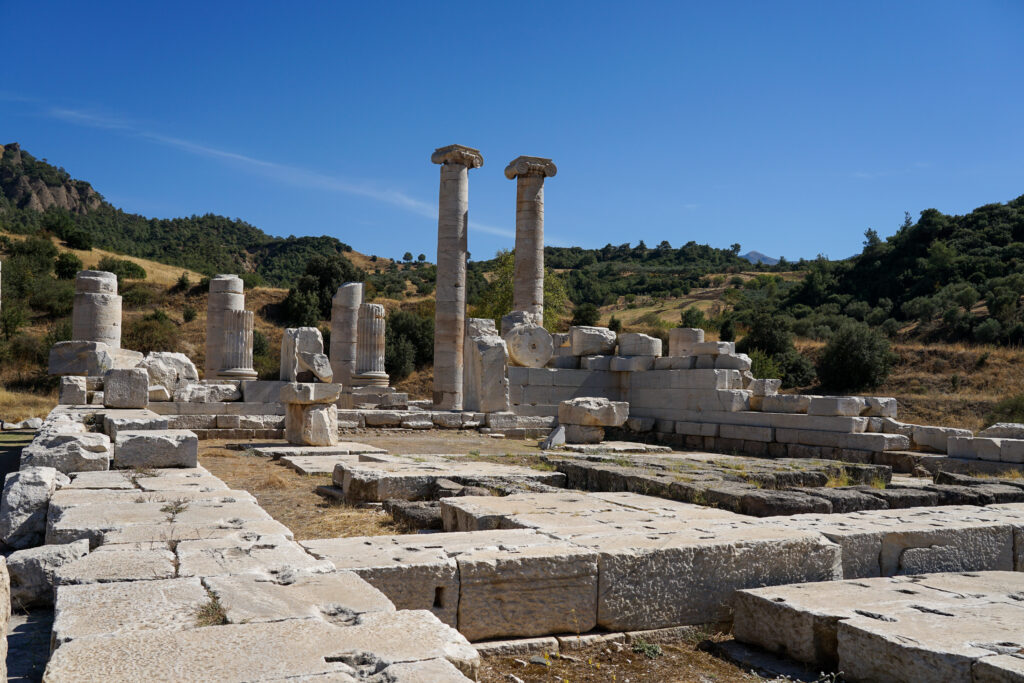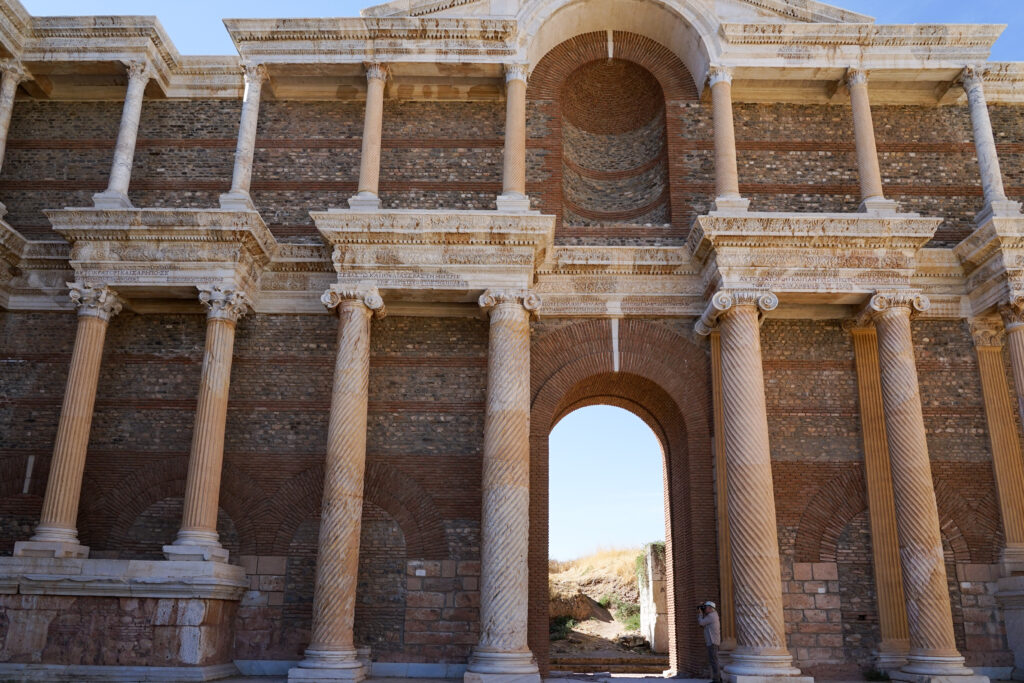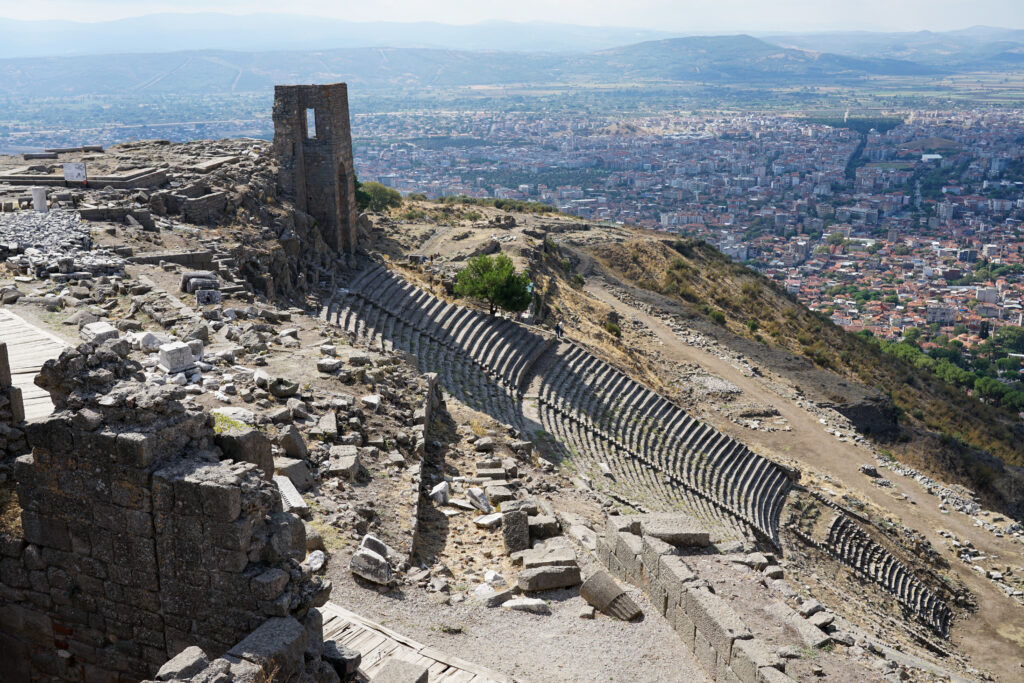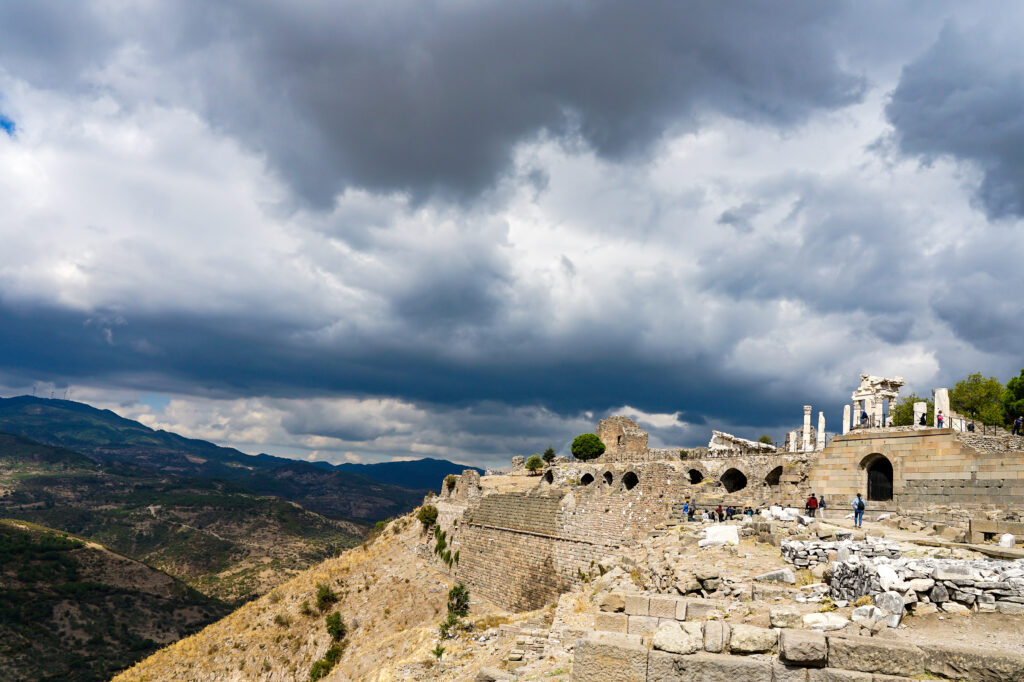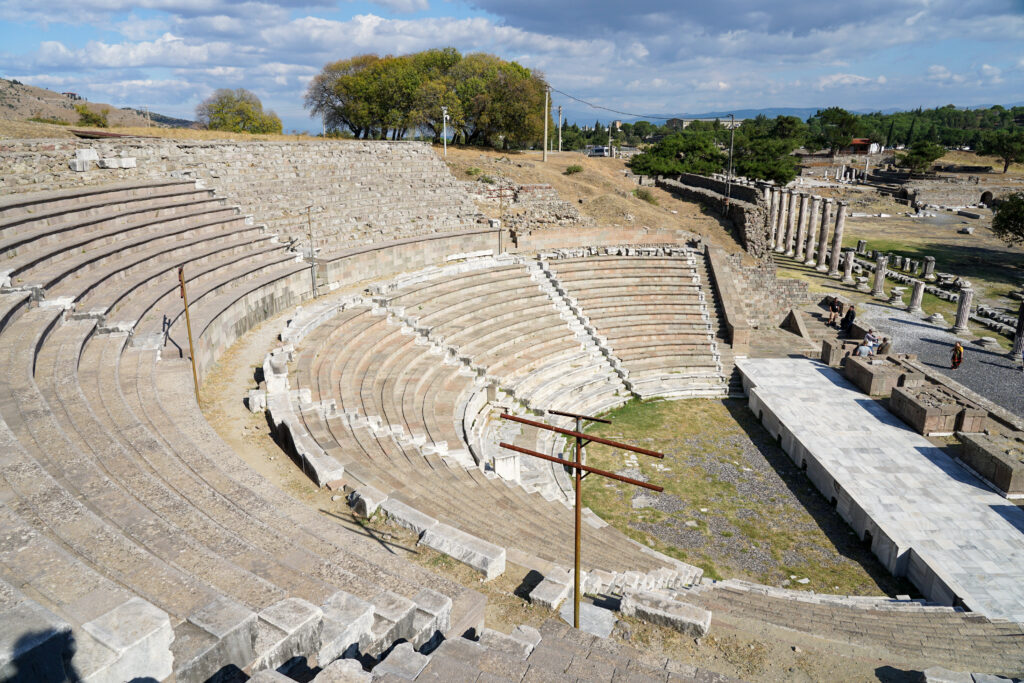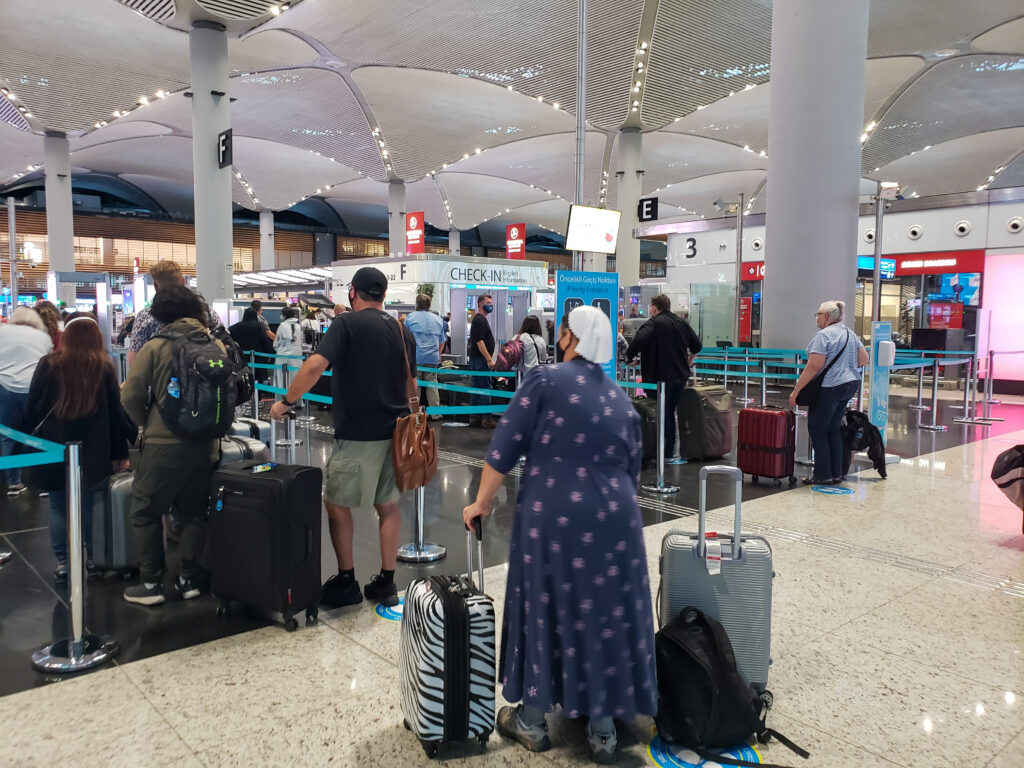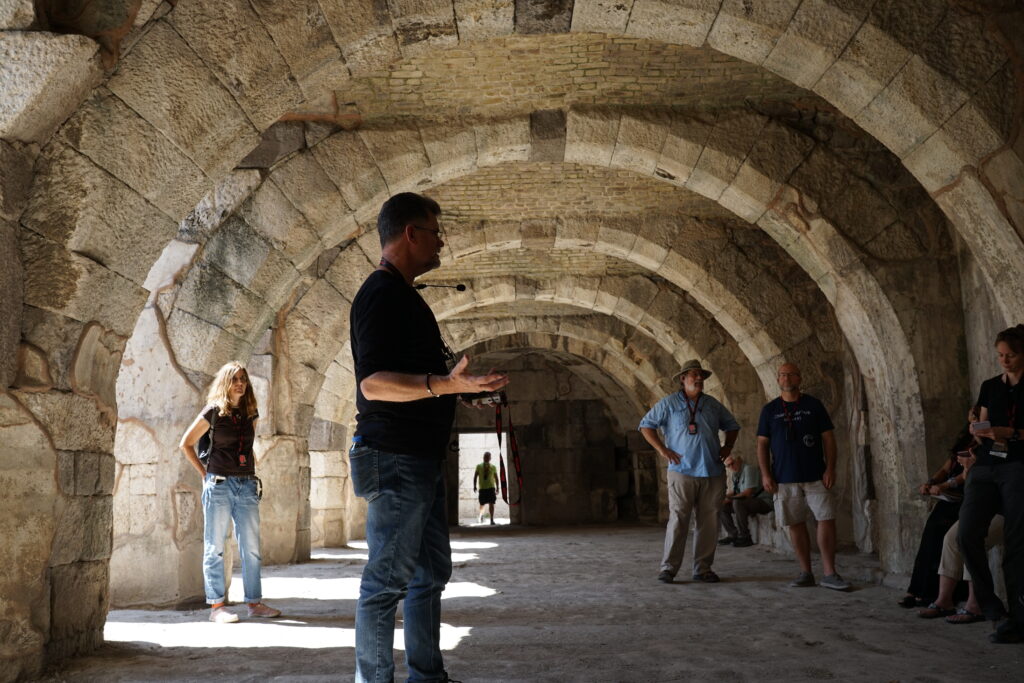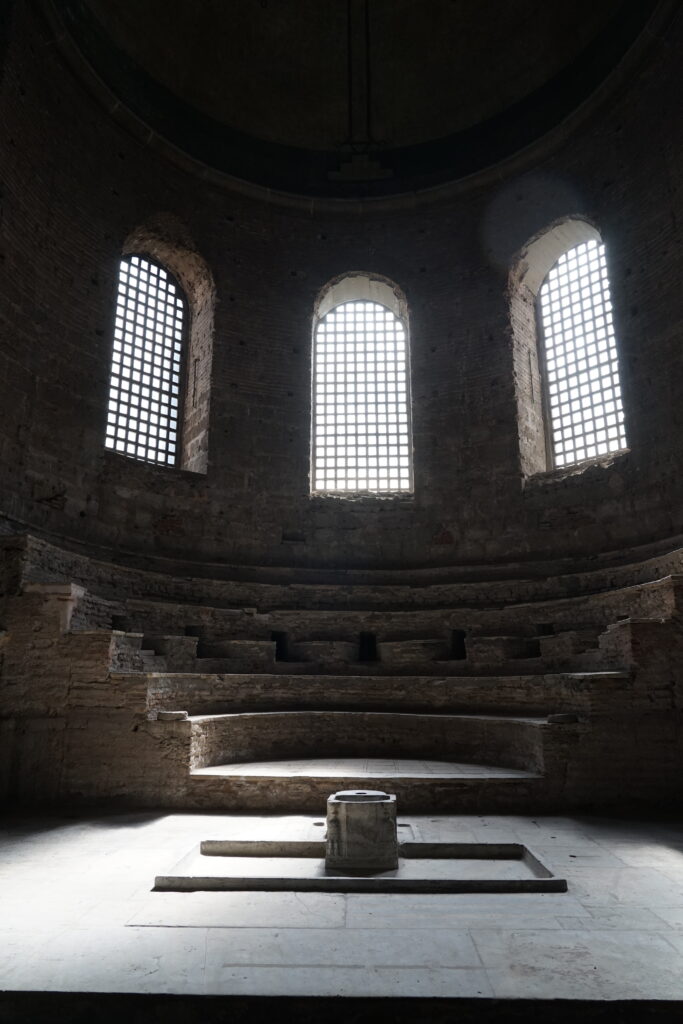Miletus is the place of Paul’s goodbye, so it is fitting for our last day of touring. It is also the place of pre-Socrates philosophy. Randy talked about the separation of science and philosophy, and how today the distinction is blurred in the discussion of origins.
The Miletus site is in the middle of cotton and sunflower fields today. The silt of the Mendere River (meander) has filled in the area with silt. The sea is now 20 miles away. Orthogonal planning originated with the Greeks.

Miletus was known for the erotic poetry called Miletian Tales. The books have been lost but there are many quotes.
The theater was a Greek full circle theater that had been converted to a Roman half (a little more) with a stage at the front. The audience would have been facing the beauty of the sea beyond the stage. The seats were stylized, with lion’s feet at the ends. An indentation marked the back of the seat area and start of the next row’s feet area.


Sitting in the seats of the theater we sang some hymns about Jesus. The voice of the theater, with its degradation of the culture, is now silent. Jesus will have the last word.


In the shade of an olive tree near the monument of the ancient harbor where Paul’s farewell took place we listened to the lessons from Acts 20. They understood these to be Paul’s last words to them. Ten points: An open life, other person centered, a mature ministry faces a ministry of trouble, preaching/teaching, sensitivity to the Spirit’s leading, determination, protective preparation of your flock, trust in a sovereign God, addiction to God’s Word, tenderness toward each other.

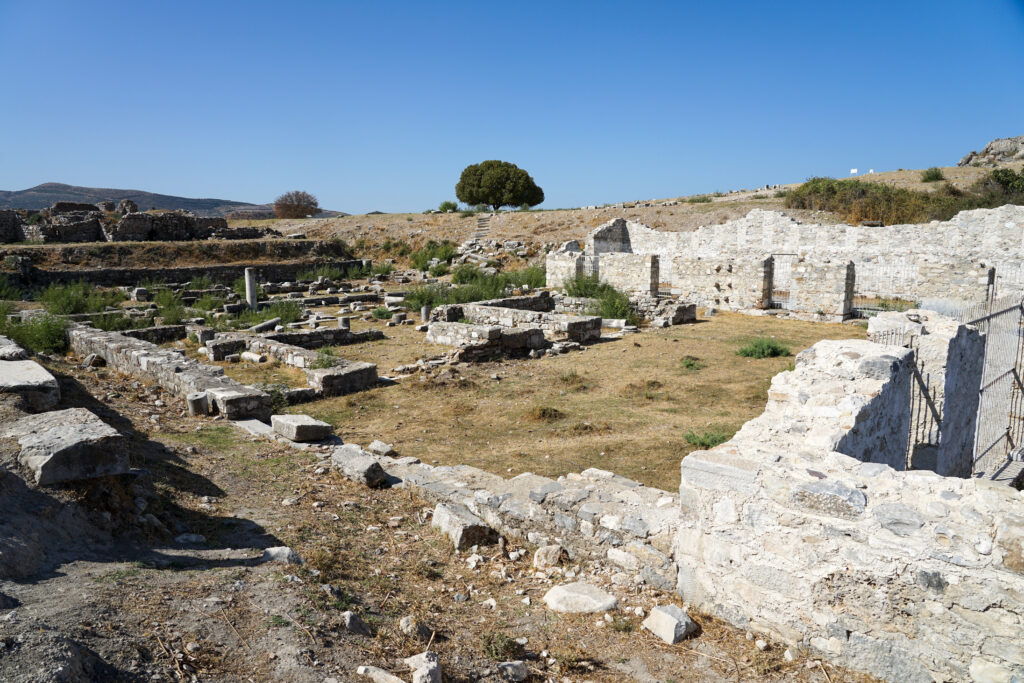

For lunch we stopped at a place called My Mother’s Kitchen. After that we went to an outlet store for leather products.
Late afternoon we visited St Jean’s Basilica. This is a sixth century church built over John’s tomb.









